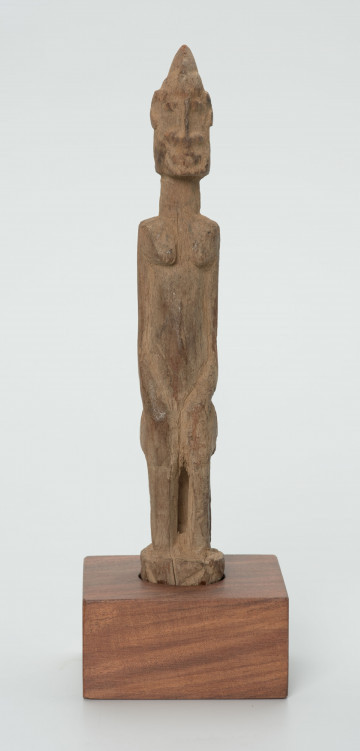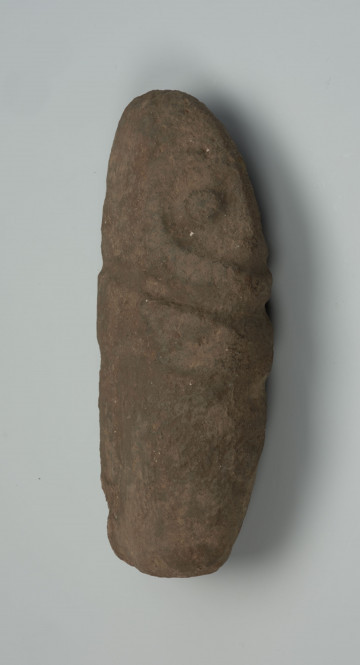
Figurine - ancestor
między 1901 — 1950
National Museum in Szczecin
Part of the collection: Collection of Dogonian art
Given gender and age criteria, we can divide the Dogon society into three distinct categories: the world of men, the world of women and the world of children. Men play the main, dominant role in it and are involved in managing people, directing religion and the economy and politics. Women are focused on three tasks that are also very important, but are described by men as secondary. These are taking care of the husband, the children and the home. The world of children is a world of play, which is a form of learning. There are many themes in the mythology of the Dogon that describe rivalry between men and women. It is most often the case in passages where it is described that women were the first to possess something, but men deprived them of it. A great example of this is the myth about the origin of the masks. It was a woman who stole them from the Andumbulu - lowly creatures living in the bush - and brought them to the village. However, her husband saw in the masks an instrument for dominating one group over another and got rid of his wife by ordering her to fetch water. In her absence, he stole the masks and all the paraphernalia and hid them with other men in a cave. Another example of gender rivalry from which men emerge victorious is the story of konyo, a traditional beer made from millet. The deity Gyinu taught the women how to make it, but the men were the first to drink it and thus gained clarity and a different perspective on many important issues.Although the boundaries between the worlds of men, women and children are very tight, there is a balance between them and their competences complement each other, which is beneficial for the proper functioning of the Dogon society.
Ewa Prądzyńska
Author / creator
Dimensions
cały obiekt: height: 11,5 cm, width: 3 cm
Object type
figure
Creation time / dating
Creation / finding place
Identification number
Location / status

między 1901 — 1950
National Museum in Szczecin

między 1951 — 2000
National Museum in Szczecin

między 1951 — 2000
National Museum in Szczecin
DISCOVER this TOPIC
Museum of King Jan III's Palace at Wilanów
DISCOVER this PATH
Educational path